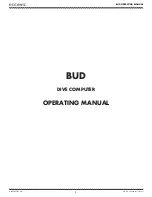
1.0 Introduction
Thank-you for choosing a Wernick Xylosynth. You are now the owner of a hand built MIDI
compatible tuned percussion controller designed to put mallet players in the most
comfortable MIDI environment possible. We’ve asked players like you a lot of questions
over the last few years and the information gathered together has resulted in many of the
unique features of the Xylosynth. Innovations like the wooden playing surface and the
flexible, easy to use software have come from this process. We’re proud to be a ‘musician
led’ instrument company and continue to strive to realise the imagination of music makers.
Your basic Xylosynth package should include the following:
3 Octave F-F Xylosynth
USB Power Supply Adapter
2 x 3 metre USB A-A Cable
3 metre MIDI (5 Pin DIN) Connector
Manual
Pair of Soft Vibraphone Mallets
2.0 Setting Up your Xylosynth
1.
Always make sure you mount your Xylosynth on a solid table or keyboard stand. Check
the carrying capacity of any stand. If you
plug your pedals in first
and power up the
instrument the Xylosynth will recognize open/closed and adjust itself accordingly.
If you
plug/unplug pedals while powered up the instrument may crash so press the edit
button to reset or power up again.
2. Power In/USB
– For 'power only' use the top slot (from wall adaptor or USB Power
Bank). There is no on/off switch. For USB MIDI communication use bottom slot. If you
have USB 3.0 (blue indicator) or above you can use the bottom slot for communication and
power. It may well work with USB 2 in your laptop but we take no responsibility for any
damage caused. The instrument needs to be
stable
while calibrating on power up so
always push the USB cable in
gently
to avoid disturbance if the other end is already
connected to the power source.
3.
If you have internal sounds, plug in your headphones or line out to PA and start playing.
Or, using the supplied MIDI lead or USB cable, connect to your chosen external sound
source (the Xylosynth is set to Channel 1 as a factory default).
2.1 Sound Sources
The Xylosynth is a MIDI controller and the standard instrument has no internal sounds. If
you don't have internal sounds the first thing needed is a sound source. This could be a
sound module or software based sampler in your PC or Mac. Sound modules with tuned
percussion sounds are available from most large musical equipment retailers. As well as
traditional tuned percussion sounds, sound modules often contain several digital sounds
with a very fast attack making them mallet friendly. For the individual sounds of your
choice you need a software based system. There are many sample libraries available with
traditional and synth sounds.
2.2 Amplification
The final link in the chain from Xylosynth to performance is amplification. The simplest
thing to do is to plug a pair of good quality headphones into your sound source or
Xylosynth with internal sounds. Otherwise simply use a keyboard or 'active' speaker amp.
For playing live, to really appreciate the stereo of most of the sounds you’ll be using, the
best solution is a small mixer with a pair of active speakers. As with all amplification it is
important to tailor your system to every possible requirement you can think of. We do
advise you should try out the amplification system before you buy or find very good
recommendations.
Think about weight if you have to take the system on the road.
3




































